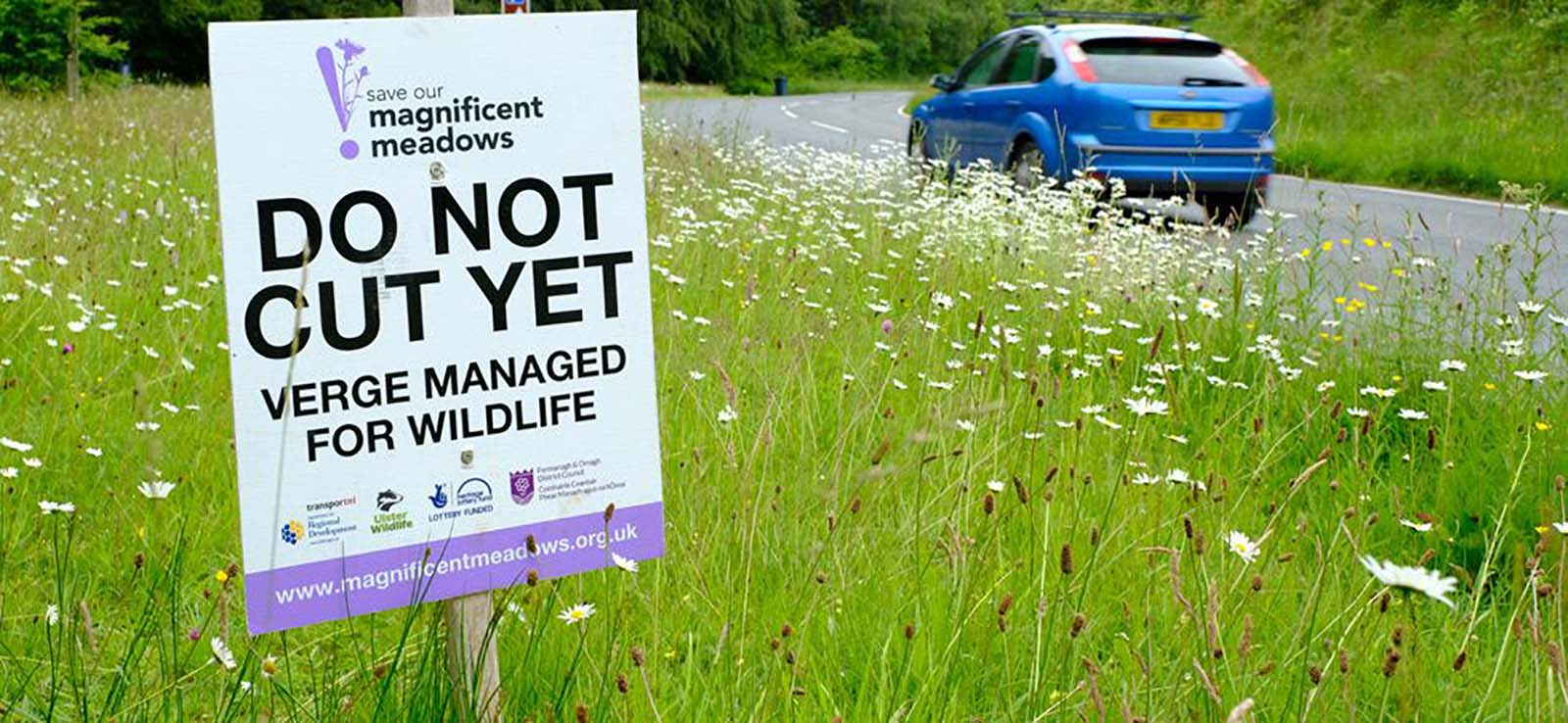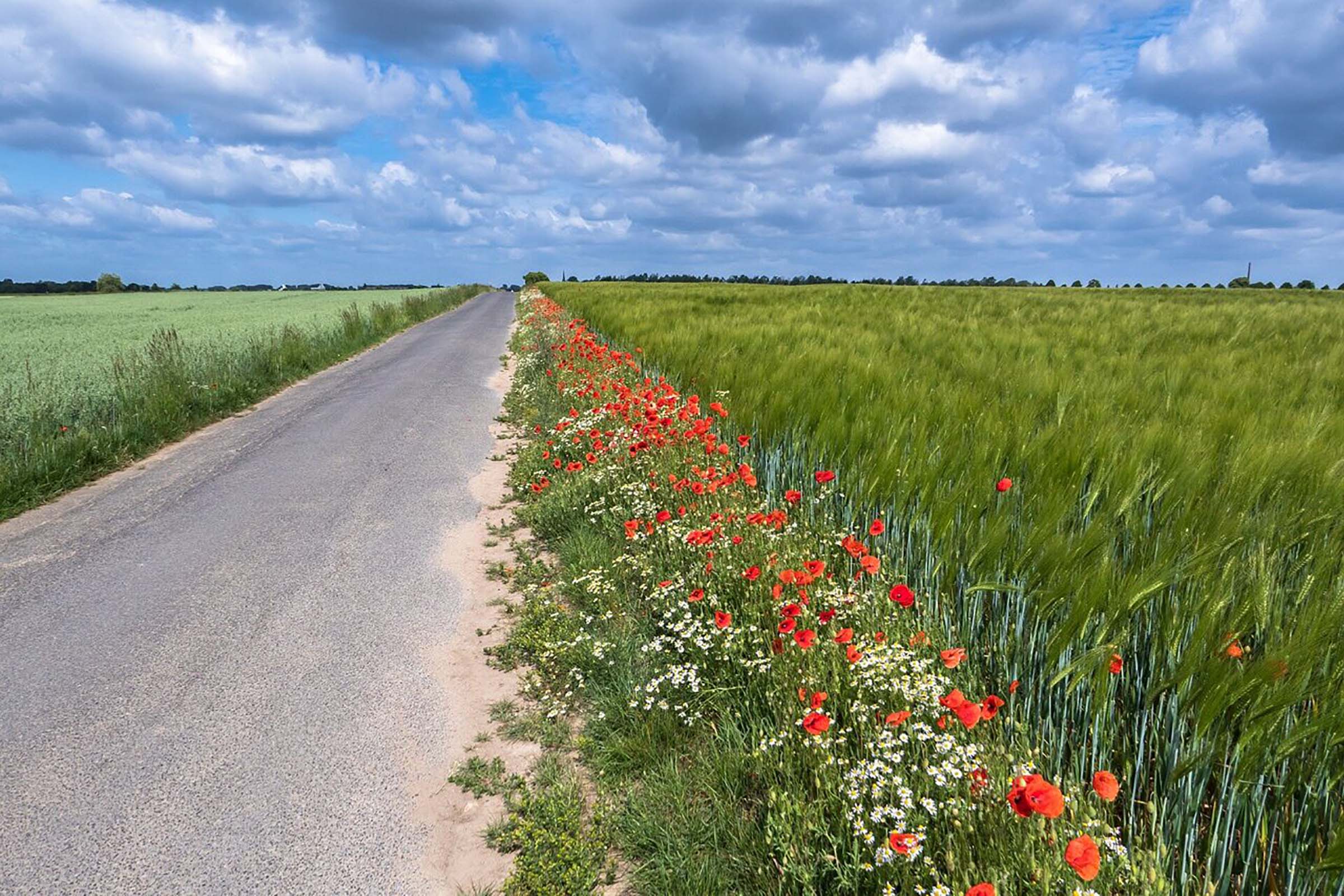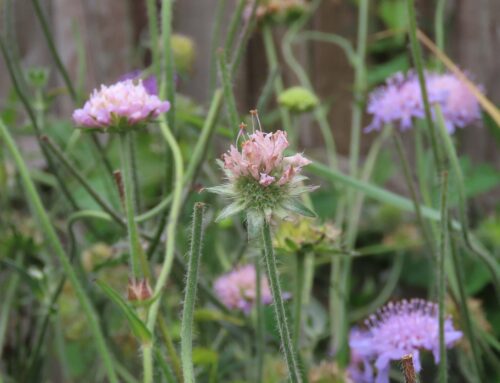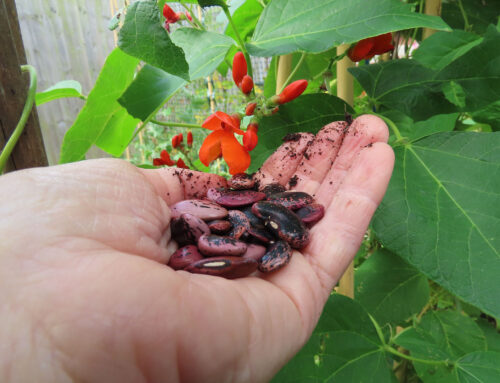Make Your Verges Work for Wildlife
(Roadside) verges also play an important role in making our landscape more wildlife friendly. Since the 1930s the UK has lost 97% of its wildflower meadows, as such, roadside grassland offers a vital habitat space for many different species of wildflowers. A 2019 report by Plantlife states that an incredible number of 700 species of wildflower grow on road verges, nearly half of all UK wildflower species and almost 45% of our total flora!
Establishing and maintaining these ‘species-rich’ grasslands is therefore “a brilliant way to improve the biodiversity value of road verges and reduce long-term management costs” says Plantlife.

Similarly, the BLUE Campaign advocates to “turn roadside verges and public spaces into native wildflower meadow[s]” stating reduced maintenance efforts and costs for councils and lower carbon footprints while supporting and increasing local wildlife density and diversity as key benefits of this intervention.
According to the Natural History Museum, today’s roadside verges mimic conditions of flower-rich meadows and other grassland habitats that have evolved over millennia through a combination of repeated hay cutting and winter grazing and to which over time, a wide range of wildlife has adapted.
The nutrient poor soil of verges is ideal for native wildflowers that attract native pollinators which in turn bring other insects and predatory mammals with them. Crucially, (road) verges act as green corridors, connecting separated wildlife habitats, supporting movement and migration of species thus leading to healthier and stronger populations.
Key principles of turning road verges into wildflower meadows include not cutting them before the end of July and then removing all grass cuttings after a few days to keep soil fertility low. It’s not necessary to use seed mixes as by this method of annual cut-and-collect, native wildflowers and plants will (re)-establish themselves quite quickly.
Keeping all this in mind, chairman and chief horticultural advisor for the ‘Gardening In’ association, Dan Ori remarks that “this guidance [..] is most appropriate for large areas of grass verge alongside major roads, and is not intended as resource and recommendation for small strips of grass outside town and suburban housing”. While “this doesn’t mean that the principles can’t be applied [to smaller verges]” he stresses that this needs great care and thought as there are not only positive outcomes but also negative ones that must be considered.
According to Dan, benefits that arise from leaving your verges unmown include:
- new species of flora and fauna emerging;
- cheaper and easier for councils than cutting verges regularly;
- increased potential to absorb pollution compared to short mown grass;
- increased potential to absorb more water from heavy rain thus reducing localised flooding
However, Dan explains that negative outcomes or problems might also occur such as:
- Grass and pioneer plant species will most likely outcompete the native flowers
- So far, he says “there is no proof to say this [leaving verges unmown] is more biodiverse than other maintenance approaches, the species of flora and fauna are simply different!”
- If there are newly planted trees on verges, longer vegetation of meadow may absorb more or all water, making the young trees vulnerable to suffer and die. This is particularly problematic since trees absorb more pollution than grass
- Meadows harbour more pollen which may affect people/neighbours with allergies/asthma
- Long grown vegetation makes it more difficult to get in and out of parking spots
- On street corners, long meadows obstruct the view which may lead to traffic accidents
Thus, verges need active maintenance in order to unfold their potential for biodiversity. For some this might mean turning their verge into a mini wildflower meadow, while for others mowing the grass regularly and planting trees is a better option. According to Dan, even short mown grass can still be very biodiverse.
Dan concludes that a “one approach fits all” will not work in the case of verges but rather “verges need to be managed to what’s appropriate for the people that live there, existing plants/trees/fauna”. All in all he says, “there are almost infinite possibilities with a verge as there are in your garden so go for what works for you!”

Here at Greenshavens Network, we advocate for a matrix of management, to support as much diversity in your neighbourhood as possible. This includes approaches like foodscapes, planting fruit trees or managing verges for their cooling effect in terms of the climate crisis. In other words, some verges need to be cut for safety while places where the verges are big enough there can very well be a strip of wildflowers while again others can be turned entirely into meadows. We recommend just taking it verge by verge.
If you’re interested in turning your verge into a garden/foodscape you may want to check out this article in The Guardian about a woman in Sydney (Australia) transforming her verges and her neighborhood.
Poppies on verge: Pixabay/CC0 Public Domain via https://phys.org/news/2021-05-road-verges-opportunity-wildflowers-bees.html. Verge Campaign / Photo via Plantlife https://www.plantlife.org.uk/uk/blog/the-road-verge-campaign.






